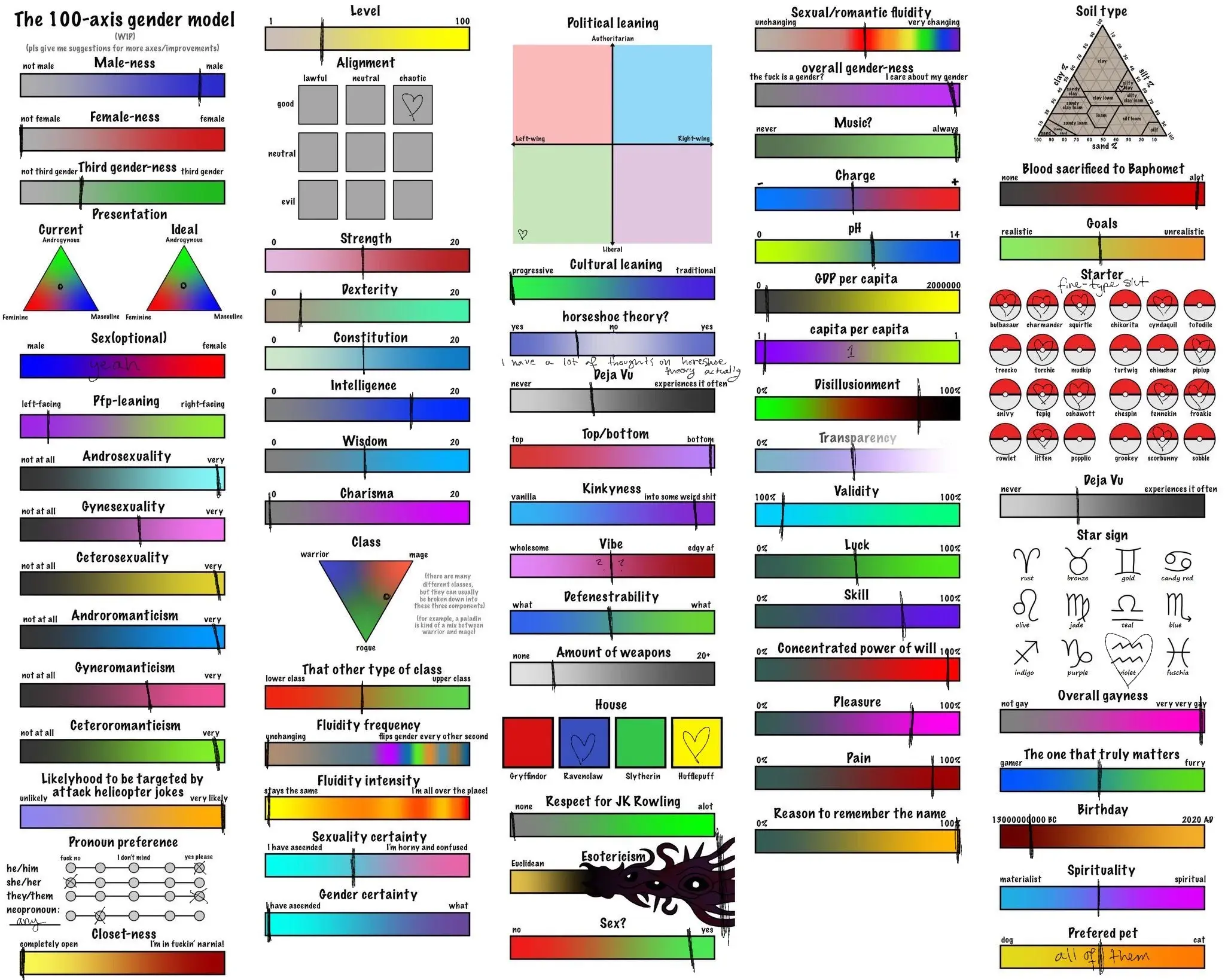this post was submitted on 19 Jul 2023
28 points (100.0% liked)
LGBTQ+
6199 readers
2 users here now
All forms of queer news and culture. Nonsectarian and non-exclusionary.
See also this community's sister subs Feminism, Neurodivergence, Disability, and POC
Beehaw currently maintains an LGBTQ+ resource wiki, which is up to date as of July 10, 2023.
This community's icon was made by Aaron Schneider, under the CC-BY-NC-SA 4.0 license.
founded 2 years ago
MODERATORS
you are viewing a single comment's thread
view the rest of the comments
view the rest of the comments
Okay so this was created as a joke, but take a look at
The deeper and longer you think about gender the more you realize it's all made up words to try and describe a feeling. It's meant as a joke but like these can all be gender too. Some people have strong feelings, others don't. If ascribing numbers helps you quantify that feeling, that's super fucking cool and I'm happy for you!
On your scale I'm solidly a 0 for male and female. I'm not sure how to interpret fluidity in this context either, meaning I'm probably not a good fit for your model. But that's okay, I'm super weird and enjoy breaking everyone's preconceived notions, in fact few things make me more euphoric than opening people eyes to the diversity and beauty in the world! 🎉💜
When it comes to representing gender graphically, i like to think that gender is best represented as an n dimensional graph, where as n approaches infinity the graph approaches "true" (whatever that means) representation of gender.
If we wanted to represent it mathematically, it could probably be represented by a multinomial logistic equation, but I think what we need to keep in mind is that the equation at best would give you an estimate of probability that someone would identify with a particular gender. How much each weight would matter for each person would be highly individual as some may view particular traits such as assertiveness with one gender identity or another even under very similar circumstances (similar location of birth, cultural background, education, etc.). We would also need to keep in mind that some genders are much more likely to be identified as within certain cultures as they do not exist directly within other cultures (Hijra or Māhū for example) and that there would be different equations for gender identity, gender expression, and gender privacy/openness.